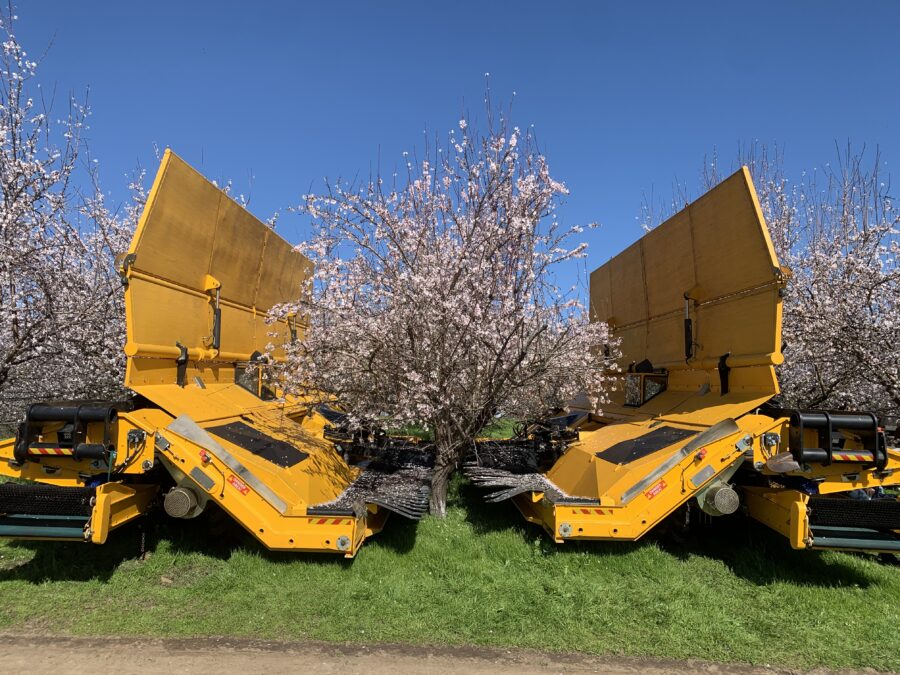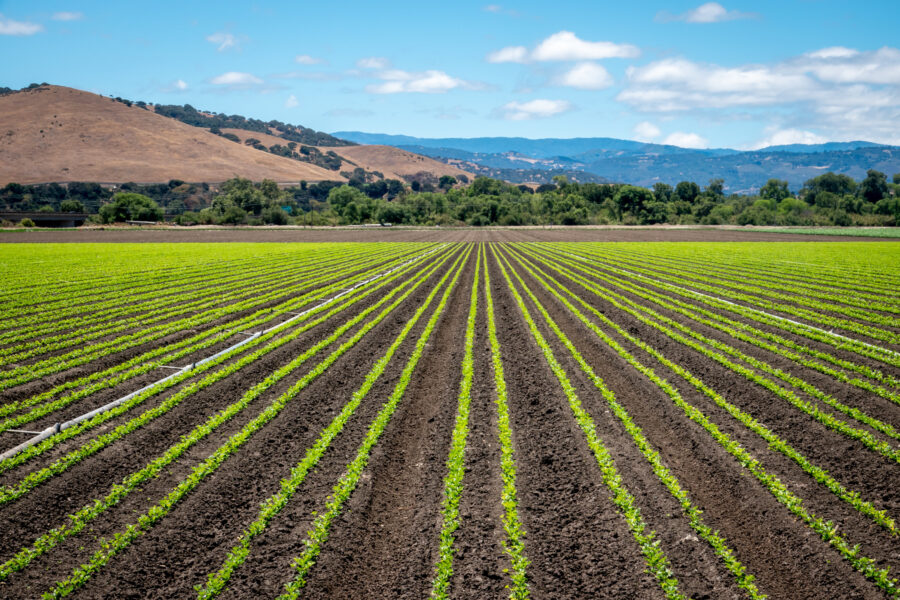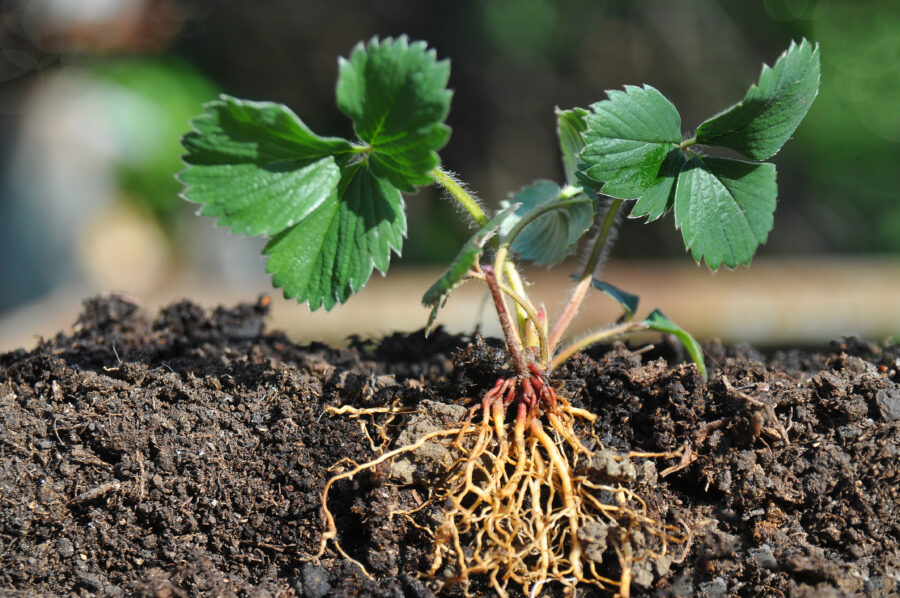
Modesto, CA — May 13th, 2024 — A multi-disciplinary authorship group of over 30 individuals has published a report comprised of literature review, policy analysis, and recommendations pertaining to the water impacts of cover crop practices in California’s Central Valley under the Sustainable Groundwater Management Act (SGMA).
The report, entitled “Cover Cropping in the SGMA Era,” is the product of a convening process jointly developed by the California Association of Resource Conservation Districts (CARCD), California Department of Food and Agriculture (CDFA), Natural Resources Conservation Service of California (NRCS-CA), and University of California Agriculture and Natural Resources (UC ANR) and assembled by Sustainable Conservation.
View the Executive Summary and Full Report
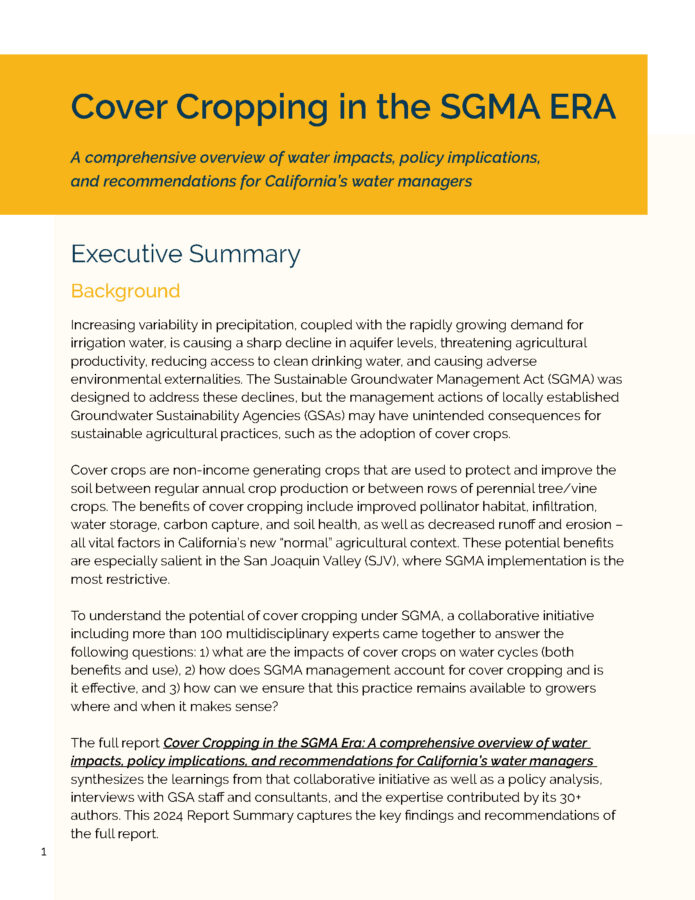
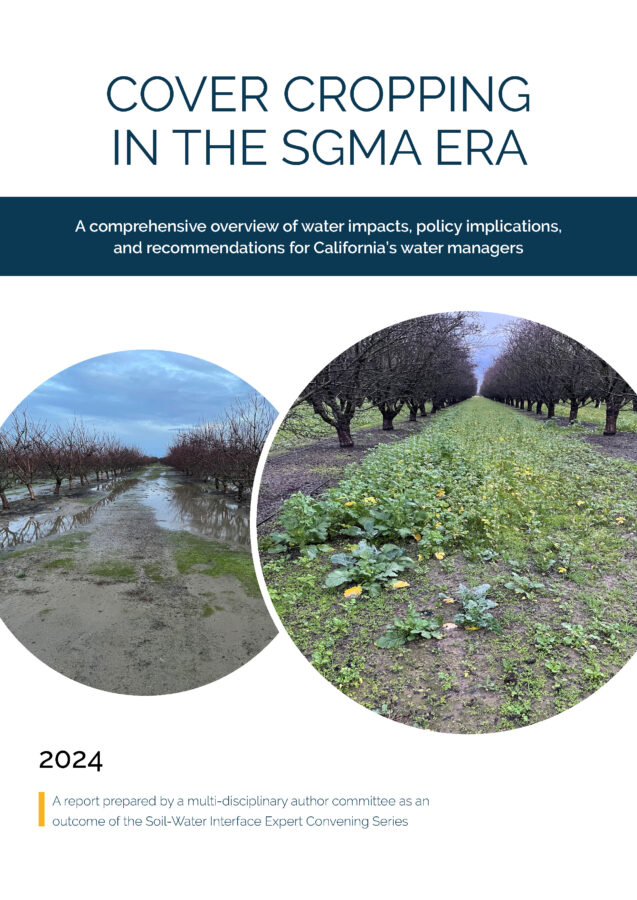
Cover Crops and their Potential
Cover crops are non-income generating crops that are used to protect and improve the soil between regular annual crop production (such as tomatoes), or between rows of perennial tree and vine crops. The benefits of cover cropping include improved pollinator habitat, infiltration, water storage, carbon capture, and soil health, as well as decreased runoff and erosion – all vital factors in California’s changing agricultural context. These potential benefits are especially salient in the San Joaquin Valley (SJV), where groundwater challenges are more acute. Thus, this report evaluates the water implications of cover cropping practices to lay the groundwork for their adoption in the context of SGMA.
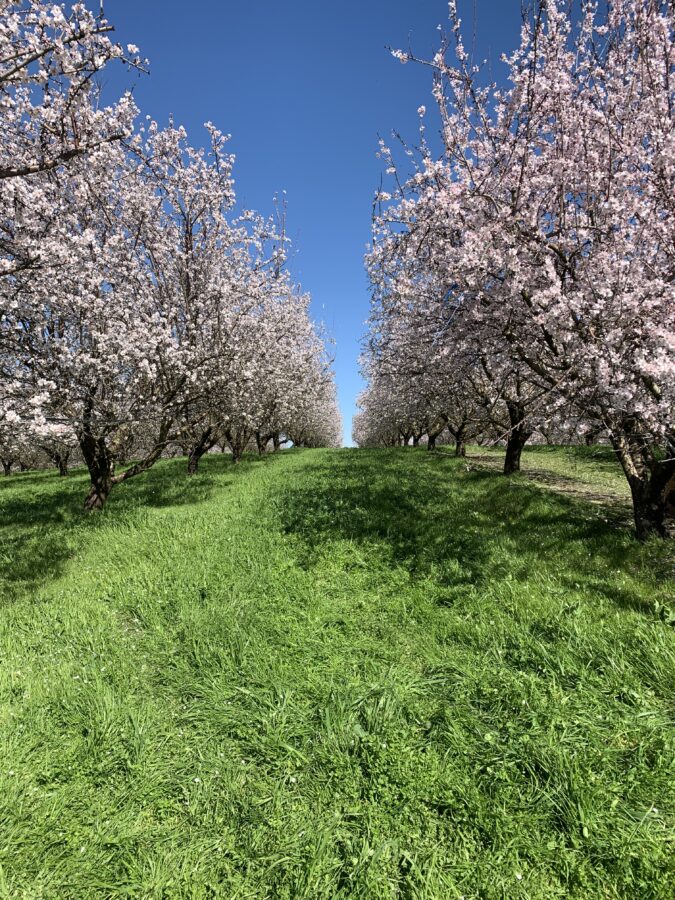
Cover crops on the Burroughs Family Farms almond orchards in Stanislaus County
Report Findings and Recommendations
To understand the potential of cover cropping under SGMA, the report’s authors came together to answer the following questions:
- What are the impacts of cover crops on water cycles (both benefits and use) for California farms?
- How does SGMA management account for cover cropping and is it capturing cover crop benefits alongside their water use?
- How can we ensure that this practice remains available to growers where and when it makes sense?
This report synthesizes the learnings from the collaborative initiative including 100+ multidisciplinary experts, a policy analysis, interviews with Groundwater Sustainability Agency (GSA) staff and consultants, and the expertise contributed by its 30+ authors. In light of these findings, the report advances a series of recommendations aimed at bridging critical knowledge gaps, enhancing the integration of cover crops into policies and incentive programs, and bolstering data infrastructure and other mechanisms to support sustainable groundwater management initiatives. One vital throughline is the need for additional guidance from the state to support local GSAs in facing the complex challenges of developing and implementing groundwater management strategies for their local watersheds. These measures aim to maximize the water benefits of cover crops within SGMA frameworks and promote sustainable water management practices crucial for the region’s agricultural resilience and environmental health.
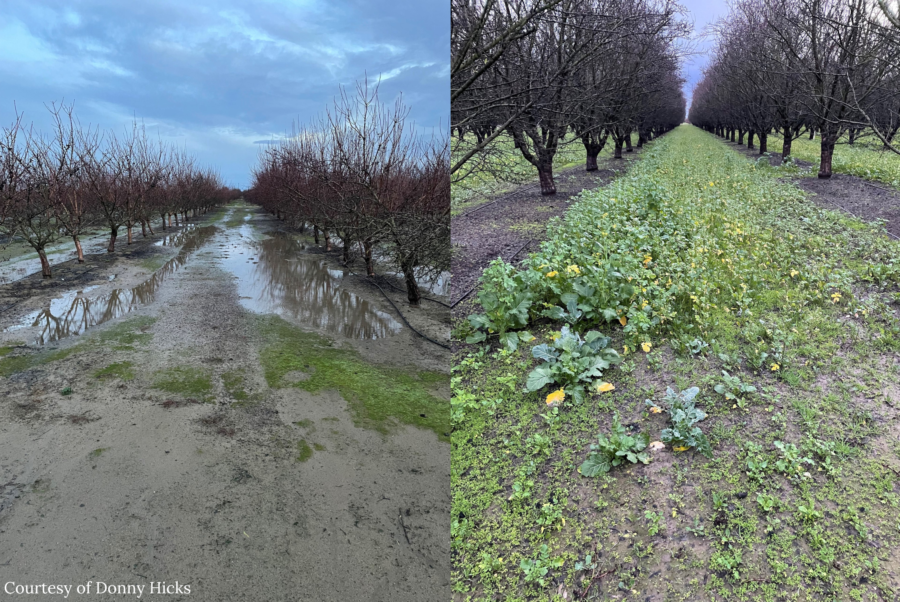
Side-by-side of Donny Hick’s almond orchard without (left) and with (right) cover crops after a big rain event
Testimonials
“Cover crops are one of the most popular practices we see farmers employ through our Healthy Soils Program,” said Karen Ross, Secretary of the CDFA. “Cover crops supply a host of benefits, such as helping to protect against soil erosion, improving soil health, crowding out weeds, controlling pests and diseases, and increasing biodiversity; and they can bring increased profitability as the number of other inputs are reduced. They also provide water benefits such as improved infiltration and reduced runoff. Yes, cover crops require a nominal amount of water to establish – and sometimes rainwater is sufficient — but the myriad co-benefits are worth it.”
“This report is unique because the University collaborated closely with state agencies and private sector partners to ensure that the different perspectives provided both the best science available as well as viable policy options,” said Glenda Humiston, University of California Vice President for Agriculture and Natural Resources (UC ANR). “By taking a comprehensive view, we can advance recommendations for cover crop policy that help us meet multiple goals, manage our natural resources more effectively, and avoid unintended consequences.”
“Cover crops are a valuable soil health practice that can help ensure the resilience of California farms to climate extremes,” said Sarah Light, UC Cooperative Extension Agronomy Farm Advisor. “As we balance the complexities of water and soil management, it is important to understand the role that cover crops play in an annual water budget so that they are not disincentivized in certain parts of the state. UC ANR expert participants provided science-based information during the convening sessions and co-authored the white paper. This paper can provide guidance to GSAs and policy makers who are charged with implementing SGMA in their regions.”
Previous Soil Health Blogs from Sustainable Conservation
